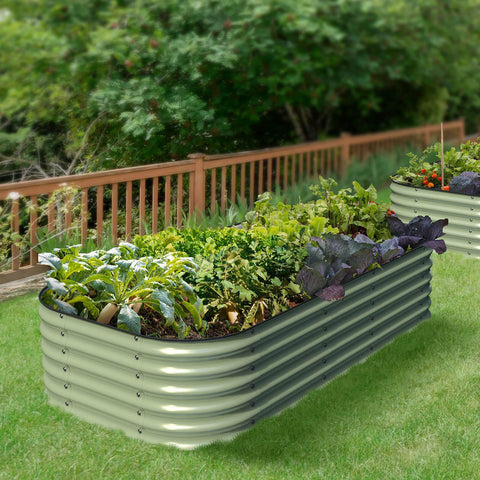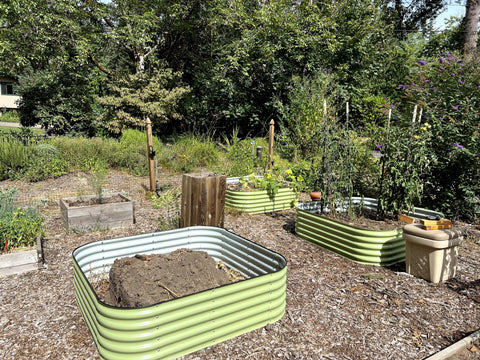The knowlege from Olle Garden beds:Maintaining Clean Garden Beds and Essential Steps for a Neat Garden
A well-kept garden is beautiful to behold, and keeping the garden beds clean is the first step. A neat garden not only improves aesthetics but also supports the health and vitality of your plants, regardless of how experienced or inexperienced you are with gardening. We'll go over key actions in this blog post to maintain a spotless outside area and tidy garden beds.
The Importance of Clean Garden Beds
Clean garden beds are the canvas upon which your garden masterpiece is painted. Here's why it's crucial to maintain them:
- Weed Control: Weeds compete with your plants for water, nutrients, and sunlight. Regular maintenance helps keep these intruders at bay.
- Pest Management: A tidy garden is less inviting to pests and insects. Removing debris and detritus reduces potential hiding spots for unwanted garden visitors.
- Disease Prevention: Cleanliness can prevent the spread of plant diseases. Diseased leaves and debris can harbor pathogens that might harm your plants.
- Aesthetics: Let's face it – a well-maintained garden is a source of pride and beauty for any gardener.

Essential Steps for a Tidy Garden
Now that we've established the importance of clean garden beds, let's dive into the essential steps to achieve and maintain a tidy garden:
- Regular Weeding
Weeds are a gardener's arch-nemesis. To keep them under control:
- Hand-pull weeds: Regularly inspect your garden beds and pull out weeds by the roots.
Mulch: Apply a layer of mulch to suppress weed growth and retain moisture in the soil.
- Use weed fabric: Consider using weed fabric under mulch to create an extra barrier against weeds.
- Pruning and Deadheading
Pruning and deadheading are essential for the health and appearance of your plants:
- Prune dead or diseased branches: Remove any dead, damaged, or diseased branches to encourage healthy growth.
- Deadhead spent flowers: This promotes more blooms and prevents the plant from wasting energy on seed production.
- Soil Care
Healthy soil is the foundation of a thriving garden:
- Amend the soil: Add compost or organic matter to improve soil structure and fertility.
- Fertilize appropriately: Use a balanced fertilizer based on your plant's needs and follow recommended application rates
- Watering
Proper watering is vital for plant health:
- Water deeply: Water your garden beds deeply and less frequently to encourage deep root growth.
- Use soaker hoses or drip irrigation: These methods minimize water waste and keep foliage dry, reducing the risk of disease.
- Cleaning Debris
Regularly clean up garden debris to maintain tidiness:
- Remove fallen leaves: Fallen leaves can harbor pests and diseases. Rake them up and compost or dispose of them.
- Clear spent plants: Remove dead or finished plants to make space for new growth.
- Pest and Disease Management

Stay vigilant for signs of pests and diseases
- Inspect regularly: Check your plants for any signs of trouble, like chewed leaves or discolored foliage.
- Use organic controls: If pests or diseases appear, consider using organic remedies like neem oil or insecticidal soap.
- Garden Organization
A well-organized garden is easier to maintain:
- Label plants: Use plant markers or labels to identify your plants and keep track of their care requirements.
- Store tools properly: Clean and store your gardening tools after use to extend their lifespan.
Following these important instructions for a tidy garden and keeping your garden beds clean not only guarantees a lovely outdoor area but also encourages the health and longevity of your plants. Your garden will bloom into a tranquil refuge with regular care and attention, serving as a showcase for your gardening skills. So get to work and enjoy the satisfaction of a well-kept garden that you, your family, and your neighbors will all enjoy.
